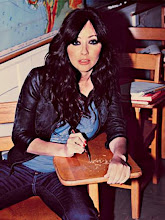You can read about it here:
www.remineralize.org
www.chelationtherapyonline.com/articles/p15.htm
www.bioenergywiki.net/index.php/Remineralize_The_Earth
Remineralizing of the soil is believed to result in:
• Higher product yields
• Increased resistance to disease, insects & parasites
• Decreased need for chemical fertilizers
• Improved frost & drought tolerance
• Enhanced flavor & shelf life
• Increased nutrient density
As far as our garden goes, I did a bunch of research on remineralization when we began to build our boxes. One reason remineralization seemed like such a good idea for us is because minerals are vegan friendly and organic. Rock dust and sea minerals (salts) were our minerals of choice -- specifically, Summa Minerals (which we got from a place called Bio Green here in Wauconda, Il), and a product called Sea-Agri (sea mineral salts that come from the ocean).
http://www.seaagri.com/
http://www.remineralize.org/resources/
The application rates are very small for both of these, so a bag of minerals/salts will last you for years if you have an average size garden.
For the sea minerals, we were instructed to add 1 lb per 100 square feet of soil, and incorporate it into the top 6 inches. Our garden boxes are 16 square feet each, and we have twelve of them -- for a total of 192 square feet of soil. This means we only need about 2 pounds of sea minerals for our entire garden. We purchased a 50 pound bag and had it delivered within a couple days for around $70. We applied 10 tablespoons to each box.
For the Summa Minerals, the application rate was the same (1 lb per 100 square feet). In order to figure out how many tablespoons to add to each box, I took the number of tablespoons in a pound of flour (64), multiplied that by 2 (we need 2 pounds for 200 square feet), and then divided by 12 (boxes) to get 10.6 tablespoons per box. To apply it, we used a small mesh kitchen strainer to sift it onto the soil evenly -- then used a rake to work it in a bit. It's the same consistency as powdered sugar -- but with a beautiful rich red clay color.
Now we just have to wait and see if we get any super amazing yields from our garden this summer!

